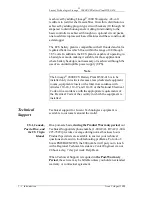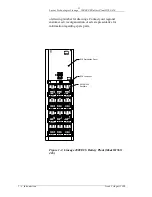
Lucent Technologies Lineage
®
2000 ECS Battery Plant H569-416
Issue 2 August 1996
Product Description 2 - 7
DC Distribution
The ECS dc distribution is shown in Figure 2-3. The distribution
contains the plant charge and discharge bus bars, battery bus,
distribution bus, circuit breaker bus, positive and negative
rectifier bus, plant shunt, optional LVD/R contactor, fuse panel
and circuit breaker panels.
Distribution Bus
Bars
The distribution bus bars include the charge return bus,
discharge return bus, battery bus, LVD bus, distribution bus,
circuit breaker bus and positive and negative buses (See Figure
2-3). Battery strings are terminated to the battery bus and the
charge return bus. Negative rectifier outputs are routed to the
distribution circuit breakers through the negative rectifier bus,
the distribution bus and the circuit breaker bus. Positive rectifier
outputs are to the discharge return bus through the positive
rectifier bus, charge return bus and the plant shunt.
The load conductors are terminated on distribution strips above
the circuit breaker panels and the return conductors for load
circuits are terminated on the discharge return bus.
Plant Shunt
A current shunt is a sensing device which provides a millivolt
signal proportional to the current flowing through it. The
millivolt-to-ampere ratio of the shunt is the dc resistance of the
shunt (in milliohms), which is thermally stable and accurately
known.
The current shunt in the ECS Battery Plant is connected between
the Charge Return Bus and the Discharge Return Bus (see Figure
2-3). It is used to measure the total current supplied to the load
from the rectifiers and/or batteries. The shunt has a full scale
rating of 50 millivolts at the maximum plant current of 1200
amperes. The shunt millivolt signal is sent, via the CP5 Fuse
Board, to the controller where it is translated back to amperes
and displayed on the digital meter.
Low Voltage
Battery
Disconnect/
Reconnect (LVD/
R) Feature
To prevent costly battery damage due to deep discharges, the
ECS Battery Plant may be equipped with an optional automatic
battery disconnect. This disconnect is designed to isolate
batteries from the load when the plant voltage reaches the lowest
usable battery voltage. The disconnect level is below the
operating range of most load equipment, in which case service to
the load would already have been lost. The disconnect does not
















































